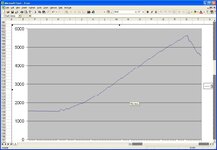I recently purchased an OBD-II scanner (contains the ELM327 universal protocol converter), and am working on a custom interface to it. Today I noticed that my tach and speedo are off from the OBD-II reported values. The tach gauge is about 250RPM higher than the scanner at 4500RPM, and the speedo gauge is about 4MPH higher than the scanner at 70MPH. I have OEM tires and rims. So, which should I believe? I don't have a radar dector - so can I drive faster now? 
Also, are we unable to monitor O2 sensor data on the MS3? The scanner is always reporting that a full drive cycle is incomplete or the vehicle does not support O2 monitoring. This is even after I drive it 25 miles.
Also, are we unable to monitor O2 sensor data on the MS3? The scanner is always reporting that a full drive cycle is incomplete or the vehicle does not support O2 monitoring. This is even after I drive it 25 miles.
Last edited:

